An imprint of Rowman & Littlefield
Falcon, FalconGuides, and Outfit Your Mind are registered trademarks of Rowman & Littlefield.
Distributed by NATIONAL BOOK NETWORK
Copyright 2016 by Rowman & Littlefield
All photos by the author.
Maps: Melissa Baker and Alena Joy Pearce Rowman & Littlefield
All rights reserved. No part of this book may be reproduced in any form or by any electronic or mechanical means, including information storage and retrieval systems, without written permission from the publisher, except by a reviewer who may quote passages in a review.
British Library Cataloguing-in-Publication Information available
Library of Congress Cataloging-in-Publication Data available
ISBN 978-1-4930-0985-5 (paperback)
ISBN 978-1-4930-1510-8 (e-book)
 The paper used in this publication meets the minimum requirements of American National Standard for Information SciencesPermanence of Paper for Printed Library Materials, ANSI/NISO Z39.48-1992.
The paper used in this publication meets the minimum requirements of American National Standard for Information SciencesPermanence of Paper for Printed Library Materials, ANSI/NISO Z39.48-1992.
The author and Rowman & Littlefield assume no liability for accidents happening to, or injuries sustained by, readers who engage in the activities described in this book.
To my incredible parents, Ron and Jane Suess: Without their love and sacrifice, nothing I have accomplished would have been possible.
Acknowledgments
It is to my wife, Harmony, that I am most grateful. Her encouragement, wisdom, and patience enabled me to complete this project. More importantly, she shares my vision of life, and I am honored to travel that road with her.
It is not possible for me to express how grateful I am for my parents, Ron and Jane. I had the great fortune of being their son, and from them I learned integrity, hard work, and selflessness. Through them, I received the blessing of growing up in Sonoma County. The genesis of this book lies in the many hikes, Boy Scout outings, and other adventures in this corner of the world that they made possible. Their giving does not end there. Their logistical support was the linchpin of the entire project. More importantly, they happily invested in my children while I was on the trail. Their selfless giving is an outward expression of their love for me and my family.
I am thankful for the input that others have put into this book. John Phillips was instrumental in helping me understand the geomorphology and geology of the Wine Country. His thoughts on the areas geography were essential to my understanding of what was where. Equally important, he encouraged me to be bold in writing about places where there is a paucity of information.
Steve Moore, of Teac Mor Vineyards, has been one of my best friends since high school. His conversations about grape growing have been entertaining and informative, and they shaped the way I think about earth and agriculture.
Longtime friends Steve and Cathi Fowler of the Honor Mansion in Healdsburg are the fount of Wine Country insights. Their taste is excellent, and I trust their recommendations without question. More importantly, they have always been supportive of me even when I did not deserve it. I am humbled and grateful.
I was joined on the trail by a few people, and I appreciated their company immensely. In addition to my wife, my children, Carson and Laramie, joined me on a few hikes. I had a great day with my father-in-law, Bill McPherson, in Sonoma. It was a blast hiking, talking, and exploring with him. My brother, Matt Suess, joined me for a great day hiking the Palisades shuttle. I never get enough time with my hero. My nephew, Conor Lawlor, was brave enough to spend a very long day on the trail with me. I had an excellent time with him and hope that we are able to do it again soon.
Introduction
I firmly believe, from what I have seen, that this is the chosen spot of all the earth as far as Nature is concerned.
Luther Burbank, the preeminent botanist and horticulturalist, wrote this sentiment in a letter to his sister describing the land around Santa Rosa. Burbank, a man of deep and abiding understanding about the natural world, had hit upon the magic that permeates Californias Wine Country.
Even beyond being an ideal place for the production of grapes, the Wine Country is a land blessed by natures gentlest and kindest hand. It has an optimal climate, rarely enduring extreme heat or extreme cold, but remaining comfortably temperate throughout most of the year. Yet, the climate is only the beginning of the wonderful environment of the Wine Country. It is a beautiful land, with rolling hills, rugged mountains, large rivers, towering redwoods, a stunning coastline, and a remarkable amount of remote backcountry beckoning to be explored. Even though Luther Burbank is not associated with the areas wine-making history, it is not surprising that the land he saw as the choicest place on Earth for the raising of plants would be given over to the production of grapes and the making of some of the finest wines in the world.
While the Wine Country is justly famous as a destination for viticulture tourism, it is often overlooked as a fantastic place for hitting the trail and exploring some fantastically beautiful landscapes. Many of the qualities that help produce world-class wines also make the Wine Country an incredible hiking experience. The temperate climate means that all of the trails can be hiked year-round. Whether it is the heart of winter or the peak of summer, you can still get out and hike spectacular trails. The land itself demands to be enjoyed and presents itself to the hiker with amazing diversity. Hikes in the Wine Country travel through large, lovely valleys filled with vast vineyards as well as to rugged mountaintops with sweeping views. The windswept coastline and tall redwoods seem far removed from the volcanic cliffs and serpentine deserts that are only a short distance away.
As beautiful and diverse as the land may be, it is embellished by human works, both past and present. The vineyards and wineries add a peaceful, bucolic quality to many of the trails. They cover the ground with their ordered rows, a giant, productive quilt yielding some of the finest wine grapes in the world. Where many human endeavors detract from the beauty of the land, viticulture only seems to increase it. Vineyards are not the only man-made works that can be appreciated from the trails in the Wine Country. Many of the hikes are filled with history, including the birth of California statehood, colonial forts, and rugged pioneers. The Wine Country is one of the most historic parts of California, and hikers have a fantastic opportunity to explore these landmarks while enjoying the wonderful natural setting.
Geography
The heart of the Wine Country consists of Napa and Sonoma Counties, the northernmost and most rural of the nine San Francisco Bay Area counties. Their inclusion with the large urban area is based on, among other things, their presence along the northern edge of San Francisco Bay and their historic orientation toward the events and economics of the bay. Geographically, however, Napa and Sonoma Counties both lie at the southern end of the North Coast Range. This means that many of the factors that go into the production of wine are brought about by a geography that is northward looking, away from the bay.
Californias North Coast Range hugs the coastline, extending north from San Francisco Bay until it pushes up against the vast Klamath Mountains. From there, it continues north along the coast as a narrow strip of mountains until it merges into Oregons Coast Range. This mountainous region can be divided into the three general regions. The first is the long string of rugged, low hills and ridges that extend north from San Francisco Bay all the way to Oregon. The second region lies to the east and consists of an extensive high-elevation alpine area with vast stands of conifer forests; a few small, alpine lakes; and tall, rugged peaks over 7,000 feet high. The highest point is Mount Linn, sometimes known as South Yolla Bolly Mountain, which climbs to a lofty 8,092 feet. This part of the North Coast Range begins north of Lake Countys Clear Lake and continues north until it runs into the geologically distinct Klamath Mountains. The third and final area is in the south, between Clear Lake and San Francisco Bay. This area is also very mountainous, but the elevation is much lower and the mountains are punctuated by several large valleys.


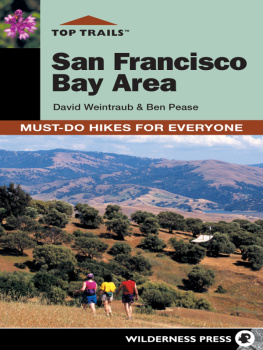
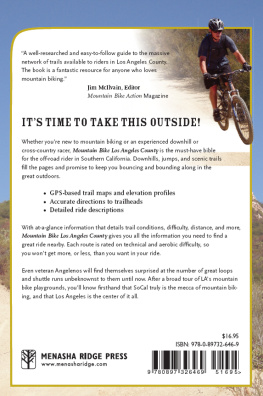
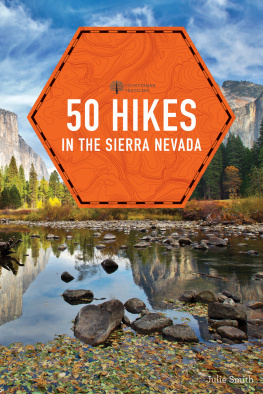
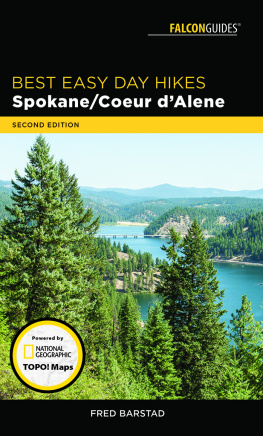
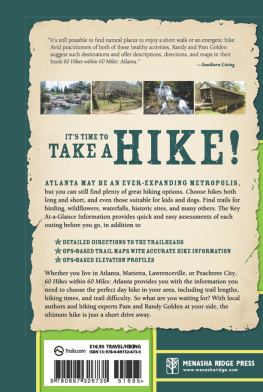


 The paper used in this publication meets the minimum requirements of American National Standard for Information SciencesPermanence of Paper for Printed Library Materials, ANSI/NISO Z39.48-1992.
The paper used in this publication meets the minimum requirements of American National Standard for Information SciencesPermanence of Paper for Printed Library Materials, ANSI/NISO Z39.48-1992.